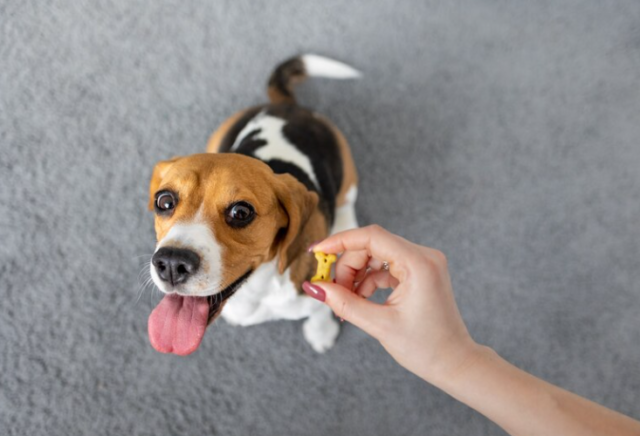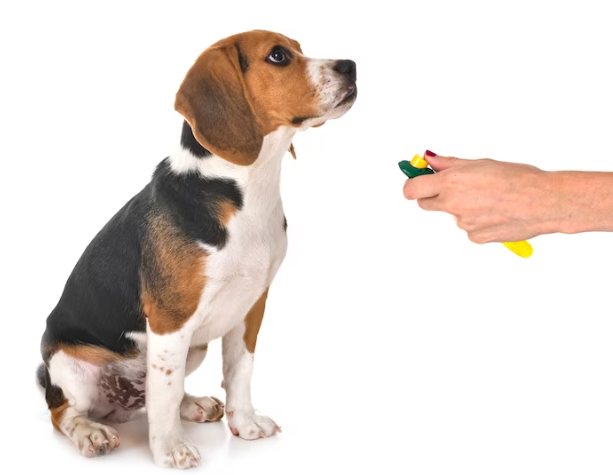Introduction: Addressing the Challenge
Giving pill to a dog who refuses to eat can be a frustrating task for any pet owner. However, with the right approach and a bit of patience, it is possible to administer pills to your canine companion successfully. In this article, we will explore various effective methods to give a dog a pill when he won’t eat. Follow these tips to ensure your dog receives the necessary medication without stress or hassle.

Understanding the Resistance
It’s essential to understand why your dog may refuse to eat when given a pill. Some common reasons include:
1. Medication Taste or Smell
- Dogs have a keen sense of smell, and certain medications may have a strong odor that repels them.
- Medications with bitter tastes can deter dogs from swallowing the pill willingly.
2. Lack of Appetite or Illness
- Dogs experiencing a lack of appetite due to illness or other factors may reject the food, including pill-concealed treats.
3. Negative Associations
- Previous negative experiences, such as forced medication, can create anxiety or fear, causing dogs to avoid pills altogether.
Proven Techniques to Give a Dog a Pill When He Won’t Eat
1. Pill Pockets or Treats
Using pill pockets or treats designed specifically for medication administration is an effective and popular method. Follow these steps:
- Place the pill inside the pill pocket or treat.
- Offer it to your dog, allowing them to consume the treat, including the hidden pill.
2. Food Coating Method
This technique involves coating the pill with a food item your dog enjoys. Here’s how to do it:
- Identify a food with a strong aroma or taste, such as peanut butter or cheese.
- Hide the pill inside a small portion of the chosen food.
- Present the coated pill to your dog, ensuring they eat it entirely.
3. Crushed Pill Mix-In
For dogs who refuse to consume pills, crushing them and mixing them with food can be a suitable alternative. Follow these steps:
- Crush the pill into a fine powder using a pill crusher or mortar and pestle.
- Mix the powdered pill with a small amount of wet food, such as canned dog food or a savory broth.
- Ensure your dog consumes the entire mixture.
4. Pill Syringe or Applicator
A pill syringe or applicator is an effective tool for administering pills directly into your dog’s mouth. Here’s how to use it:
- Place the pill at the back of your dog’s throat using the syringe or applicator.
- Gently push the plunger to release the pill.
- Keep your dog’s mouth closed and encourage them to swallow.
Conclusion
Administering medication to a dog who refuses to eat can be a challenge, but it’s crucial for their well-being. By employing techniques like using pill pockets, food coating, crushed pill mix-ins, or pill syringes, you can ensure your furry friend receives their necessary medication. Remember to approach the process calmly, using positive reinforcement and rewards to make it a more positive experience for your dog.
FAQs
Q1: How can I make my dog swallow a pill without food?
While it's generally easier to administer pills with food, you can try using a pill dispenser or consulting your veterinarian for alternative methods. They may suggest techniques like the "Open Jaw" method or using a gelatin capsule to encourage swallowing.
Q2: Can I crush a pill and mix it with dry food?
Crushing pills and mixing them with dry food is generally not recommended, as the medication may not be evenly distributed, and your dog might detect and avoid consuming it. It's best to consult your veterinarian for suitable alternatives.
Q3: Are there alternatives to traditional pills for dogs?
Yes, some medications come in alternative forms, such as chewable tablets, flavored liquids, or transdermal patches. Speak with your veterinarian to explore these options if your dog consistently rejects traditional pills.
Q4: My dog is highly anxious during pill administration. What should I do?
If your dog experiences severe anxiety during pill administration, it's best to consult a professional dog trainer or behaviorist. They can help address your dog's anxiety and suggest specific techniques or training exercises to make the process more comfortable for them.
Q5: Can I break a pill into smaller pieces for easier administration?
Breaking pills into smaller pieces should only be done under the guidance of your veterinarian. Some medications should be administered as a whole for proper dosage and effectiveness. Always consult your veterinarian before altering the form or size of a pill.
Read also
- Discover the Majestic Big White Dog Breed: A Guide to These Magnificent Canines
- Best Dog Food for Puppies: Meeting the Nutritional Needs of Large Breeds
- Best Dog Food for Allergies and Yeast Infections
- Understanding the Phrase “My Dogs Are Barking” and Its Meaning
- A Convenient Solution for Dog Food Storage Container 50 lbs of Kibble
- Organic Puppy Food: A Guide to Feeding Your Furry Friend
- Dog Chewing Nails: Causes, Prevention, and Effective Solutions
- Top 10 Best Dog Brushes for Shedding and Grooming | Comparison & Reviews
- Top 10 Best Dog Raincoats | Keep Your Furry Friend Dry in Style
- Indestructible Dog Toys: Keep Your Pup Entertained for Hours
- Top 10 Best Large Dog Car Seats for Safe Travel in 2023
- Discover the Magnificent Heaviest Dog Breeds for Your Home
- Discover the Fascinating Bear Dog Breed: A Perfect Blend of Power and Gentleness
- Chihuahua: Breed Info, Characteristics, Temperament, Lifespan, Grooming, Training
- Unveiling the Enchanting Lady and the Tramp Dog Breed: A Tale of Elegance and Playfulness
- Stop Dog Barking: Effective Techniques to Prevent Barking at Other Dogs
- Dog Allergies: Understanding the Causes and Solutions
- Discover Why Dogs Chew on Their Paws: Common Causes and Effective Solutions
- Silence the Noise: Discover the Power of Anti Barking Devices
- Stop Your Dog Jumping Habits with These Effective Techniques





